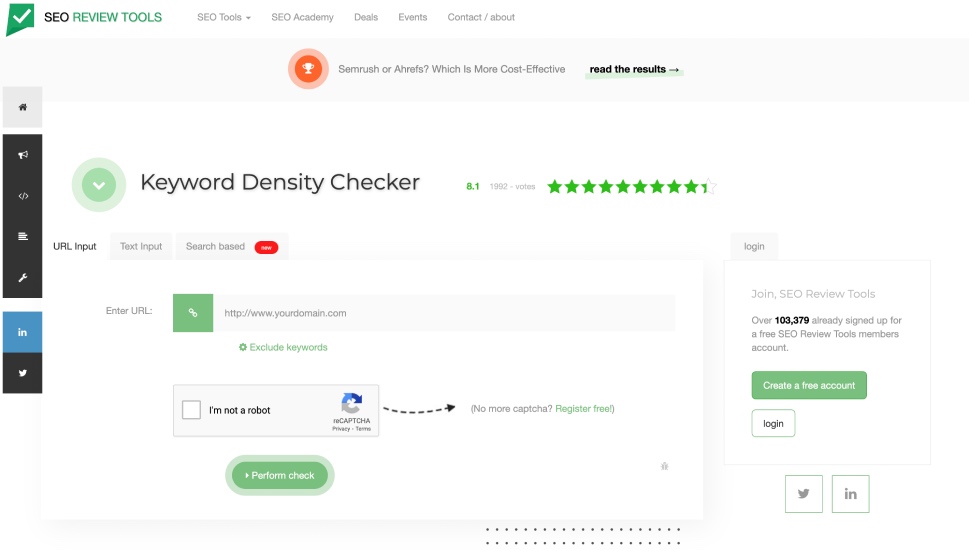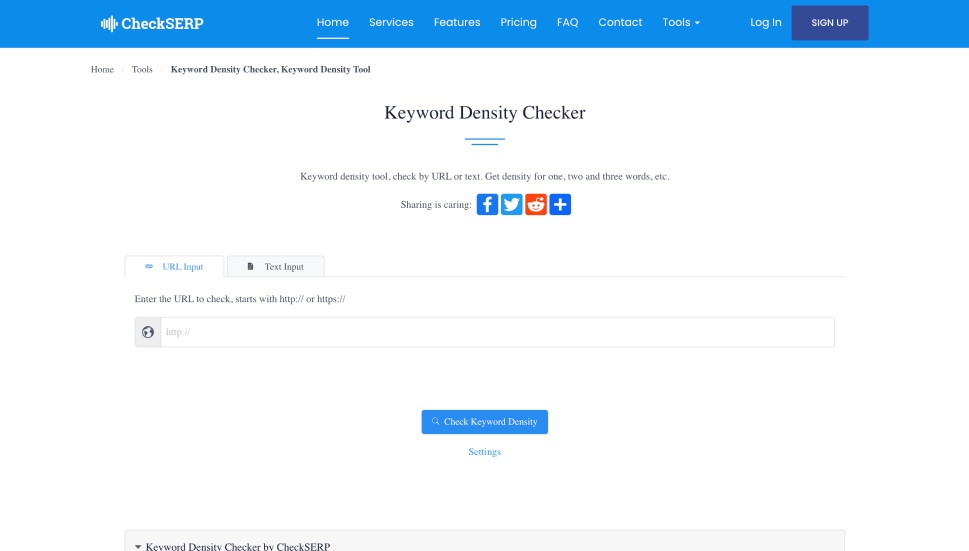A Complete Guide to Keyword Density

It’s no secret that keywords represent the foundation of any SEO strategy as they can directly impact your website’s visibility and rankings. After all, that’s why marketers insist on performing thorough keyword research before generating any type of content. Then, they can make sure their posts are ranking for the right keywords and attract the right audience’s attention in the process. But the true question is – how do you know how many keywords are required to reach your goal, without creating the opposite effect and jeopardizing your position in SERPs? This is exactly where our topic of keyword density comes into play.
This time around, we’ve made sure to talk at length about what keyword density stands for, why it’s important, and how it can affect your website’s SEO and its overall visibility in SERPs. We will also talk about some keyword density formulas you should consider using and mention a few tools you can use to stay on top of your keyword game. So, here goes:

Simply put, keyword density (otherwise known as keyword frequency) represents the total amount of keywords one can find in a specific type of content or on a webpage, but in the context of a ratio compared to the total word number. Basically, the bigger the keyword density percentage, the bigger the frequency of said keyword being present within a specific web page or content.
There is also a simple and direct formula one can use to determine keyword density on a page or post. That is by dividing the total number of keywords used by the total amount of words on a page. Then, you should multiply the number you get by 100 – this will be your keyword density percentage.
Say that you have an article that is 800 words long and that the number of times your keywords show up within this article is 8. This would be your keyword frequency formula:
8/800×100= 1%
So, in this case, the keyword density of your article would amount to 1%.
There is also another, more advanced formula, called TF-IDF. Standing for “term frequency-inverse document frequency”, this formula calculates the number of times a keyword appears on specific pages versus the frequency of the keyword showing up across multiple pages. Search engines use this formula in some cases to determine the importance of a keyword on specific pages.

Now, as we mentioned in the beginning, ensuring that you’re ranking for the right keywords will certainly help you stand out among your competition. Moreover, it will bring you one step closer to reaching the right audience and ultimately, help you boost your traffic and get more sales. All of this is possible simply due to the power of keywords themselves – users will typically type in a search query containing the keyword that best describes their search purpose, and Google will deliver the results that are most related to this keyword.
That being said, while keywords remain the driving factor of a website’s success in search rankings, one still has to be cautious not to perform the act of so-called keyword stuffing. Otherwise known as the method of cramming in too many keywords on content or page, keyword stuffing has the ultimate goal of tricking search engines into thinking such content is the most relevant for those keywords and having them place it at the top of search results. This method also falls under the category of black hat SEO, which is a list of foul techniques that have the intention to cheat the Google search algorithm.
With time, Google has created a specific set of rules and guidelines supported by the system that, sooner or later, sees through (or rather, detects) keyword stuffing and other black hat SEO tactics. Once this happens, your website receives a Google penalty, which has an instant negative effect on your website’s ranking and the overall visibility of your site.
With all this said, it’s quite easy to see what makes keyword density so important. Aside from helping your content be noticed by search engines and get the appropriate ranking, it also helps you avoid getting penalized by balancing out the number of keywords according to the total number of words in your text. And this brings us to our next point.

There are no written, or official guidelines made by Google on keyword density. However, there is the general advice not to engage in previously mentioned keyword stuffing as this can seriously undermine your ranking.
Also, there is the unofficial recommendation by many SEO experts who suggest you should use no more than one to two keywords per 200 words of your written content. This amounts to around 0.5 to 1 percent of the total keyword density.
Of course, this is only a rough estimate and generally depends on the nature of your text and its overall purpose. Ultimately, you should aim to spread your keywords naturally throughout your text without cramming them into your content. Also, you should consider using some of the other effective SEO tactics for optimal results.

Adding variations to the original keyword is also important for attracting the right kind of visitors to your page. After all, while a certain keyword may be used the most for a specific query, not every user will necessarily go for that exact same query. Instead, some will go for the keyword variants, or words and phrases close in meaning to the keyword in question.
For example, while your keyword may be “best cheap cars”, some people might search for variants like “best affordable cars”, “cheap new cars”, etc. So, by including these keyword variants into your content, you only increase your chances of your content being noticed and regarded as relevant by search engines, and finally, scoring higher in SERPs.
When it comes to the number of times you should use the keyword variant on your page, the rules are generally the same as they are for your main keyword – no more than one (to two) keyword variants in your 200 words of text.
On Page SEO Checker by SEMRush

SEM Rush is a well-known SaaS platform that has some of the best and most powerful SEO tools on the market meant to help you with your keyword strategy and improve your ranking. One such tool is an On Page SEO Checker that works by providing relevant target keyword data and comparing your page with the top 10 relevant competitors. This includes comparing your keyword density with your competition’s, providing info about any potential issues you may have with technical SEO, providing content analysis, backlink ideas, content ideas (including notifications about keyword stuffing), and more.
The pricing of the cheapest plan starts at $119.95 a month.
Keyword Density Checker by SEO Review Tools

Keyword Density Checker by SEO Review Tools is a free tool you can use within your browser to calculate your keyword density percentage. You can search according to the URL input, text input, or perform a search-based check. The latter allows you to enter the keyword and the language you’re targeting. Then, the tool pulls the data from Google and allows you to see the top-ranking sites for your keyword and check their average keyword density.
Aside from calculating the percentage of your keyword density from one-word to three-word phrases, the tool will also provide you with a color warning in case there is a keyword with a high density percentage, allowing you to spot it more easily.
Keyword Density Checker by CheckSERP

Another free tool, Keyword Density Checker is made by CheckSERP, an all-in-one rank tracking platform. To use this tool, all you have to do is go to their dedicated keyword density checker page, choose whether you want to enter your page URL or input your text (in case your content has yet to be posted online), and hit the Check Keyword Density button. The tool will then calculate the density percentage of the keywords that are most frequently used in your content. You will get your report in no more than a few seconds.
In Conclusion
Keyword density is an important SEO factor that can have a significantly big impact on your website’s ranking and visibility in SERPs. And while there are no direct rules when it comes to this particular concept, there is a general understanding in the SEO world that your keyword (and its keyword variants) should appear no more than one to two times in a text that has the length of 200 words. While the formula used to calculate keyword density is simple to use, the more content you have, the more effort it may take for you to keep track of things. Luckily, some of the tools we shared with you above should help streamline things quite a bit, so we do recommend that you check out each one and choose the tool that best fits your needs.



